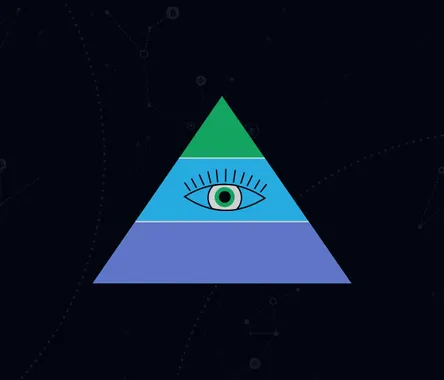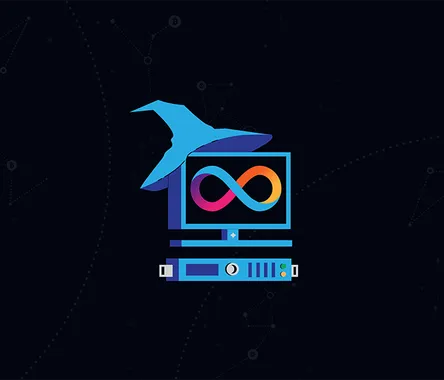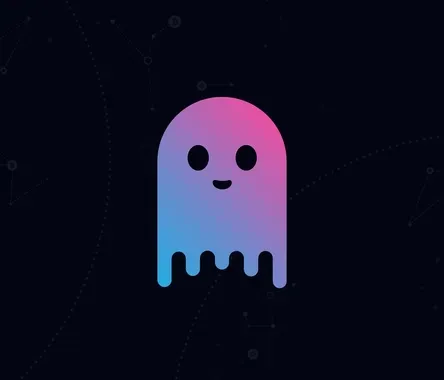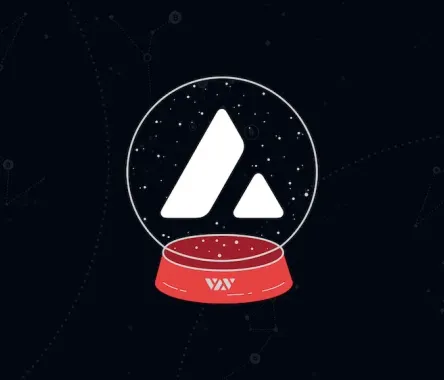What is Telos?
Telos is a third-generation smart-contract layer-1 blockchain network that runs on EOS.IO C++ smart contract technology, also compatible with Solidity and Vyper. Telos is also the first blockchain built on EOS.IO which supports Ethereum Virtual Machine smart contracts. Telos EVM aims to solve the common Ethereum 2.0 problems of scalability, high gas fees, and front runners.
Telos claims to support up to 10,000 transactions per second and produces blocks in the 0.5-second interval, utilizing less than 0.000002 kWh of energy per transaction.
How does Telos work?
Telos runs its smart contracts platform on two separate chains: their native EOS.IO C++ chain and EVM chain.
Telos EVM is not a fork of the original Ethereum code. Telos EVM is implemented on the Telos blockchain as a smart contract, meaning that any Solidity and Vyper-based projects can simply replicate their dApps and deploy them to Telos EVM without any code modifications.
Telos utilizes the same consensus mechanism as its parent ecosystem EOS.IO, namely the delegated proof of stake (DPoS), which is described in the EOS.IO review, and just like in EOS.IO, users interacting with Telos are expected to buy the network’s resources like RAM, NET bandwidth, and CPU bandwidth using the platform’s native token TLOS.
Similarly, the maintenance of the Telos is entrusted to Block Producers (BP), who are elected by TLOS stakers, whose voting weight is proportional to the share of tokens staked.
BPs, who are also named Validating nodes, are the backbone of the Telos ecosystem; they are the decentralized entities that run the Telos blockchain. BPs are effectively responsible for processing and validating transactions as well as ensuring the network's security and stability.
The blockchain deploys only 21 active block producers at a time, with up to 30 BPs being on a standby mode, who are paid to serve as a back-up to the top 21. Any standby BP can replace the active BP upon a vote by Telos token holders with voting taking place every 2.5 minutes approximately. Respectively, the active BP can be removed from the top 21 at any time upon a vote. Standby BPs are also periodically rotated into the active mode, in order to test their ability to perform block-producing functions.
Block producers execute updates to the blockchain by multi-signature transactions which must be signed by at least 15 of the 21 block producers in the current producer schedule in order to be executed.
Any Telos block producer that misses 15% of the blocks in any schedule is automatically removed from the active mode, while the 22nd ranked block producer gets elevated from standby mode and placed into the top 21.
Active block producers are rewarded a maximum of 28,000 TLOS on a monthly basis depending on their contribution, while standby block producers receive half of that amount.
Currently, native EOS.IO Telos fees are not charged to users. This has been made possible by allowing dApps developers to stake TLOS for their users. More specifically, a dApp can purchase or rent the necessary amount of TLOS for their users and thus remove the transactional fees from their app. If dApp developers don’t wish to stake tokens for their users, users can stake the resources themselves.
Telos EVM fees are fixed and paid in its native TLOS token. The current fees are about $0.10 per transaction.
The Telos network also boasts of being “Green” and ESG (Environmental, Social, and Governance) compliant network, since it consumes less than 0.000002 kWh of energy per transaction. Telos requires its validators to use the same software to verify transactions making the mining process virtual without utilizing real-world resources and energy contrary to the Proof-of-Work model.
Telos has a governance system, which is highlighted by three separate suites of tools: Telos Works, Telos Decide, and Telos Amend. These apps are also available to all stakeholders as well as dApps who build on the Telos blockchain.
Telos Decide is a consolidated on-chain, customizable voting service that gives users and developers a reliable tool for tracking and recording voting information. Telos Amend empowers any user or stakeholder to propose system-wide changes and rules for discussion and voting, without requiring them to have the skill to write the actual code. Telos Works is a mechanism for funding community projects, allocating funds for core development, marketing, dApp and tool development, onboarding, and any other project selected by the Telos voters.
How to use Telos?
Telos Blockchain is a platform that can be used to integrate applications in DeFi, Gaming, Social Media, and the NFT crypto niches.
As a first step to use the Telos network, users need to create an account and transfer some native TLOS tokens into their wallets of choice. Telos wallet support includes Metamask, SQRL, Anchor, Scatter, and Wombat.
In the official Telos documentation, developers can find a detailed guide on how to set up smart contracts on Telos EVM, as well as how to migrate applications from other EVMs to Telos EVM. The full guide can be found here. The guide for the native EOS.IO chain can be found here.
The step-by-step tutorial on building a Telos app can be found here.
Developers wishing to integrate the governance contracts of Telos into their own dApps, namely Telos Decide, Telos Work, and Telos Amend can find detailed information on how to do that here.
To set up a validator node and become a Block producer, it is first required to install the EOS.IO core software and create a unique Telos Account that will be the name of the Validator. The full guide can be found here.
The TLOS token
TLOS is the network’s native token, which can be used in a variety of use cases including governance, ownership, purchase of Telos network resources, and as a means for payment for Telos-based apps, services, and more.
In the 2018 genesis block, a total of 330,753,222 TLOS tokens were minted. 12 million of these tokens were distributed to the Telos Founders Rewards Pool and Telos Foundation, which allowed the network to launch without any ICO or Venture Capital funding.
Initially, the network paid Block Producers 1% of the total annual token supply, as new tokens were constantly minted upon validation of a new block.
However, in 2019 the community decided to halt inflation capping the total supply at 355,208,370.6674 TLOS, and established a Token Reserve Fund to pay for network operations. Additional 140,279,973 TLOS were minted to be stored in this fund.
As soon as the Token Reserve Fund runs out of tokens, Telos will use the TLOS recovery account to pay for the network’s expenses; this recovery account is sourced by TLOS tokens that were specifically minted for possible new account holders but were never claimed.
Once all reserves are spent out, the Telos stakeholders may decide to introduce changes to the tokenomics.
Currently, the TLOS Reserves offer funding to several accounts on a regular basis: Block Producers < 900,000 TLOS/month, Economic Development Fund – 150,000 TLOS/month, Telos Foundation – 700,000 TLOS/month, Telos Works – 350,000 TLOS/month, Telos Core Developers – 300,000 TLOS/month, and Resource Exchange (REX) - 1,700,000 TLOS/month.
TLOS Staking
TLOS represents ownership of the network resources. Developers and users can stake TLOS in the network to gain access to resources necessary for processing transactions. Additionally, developers can stake TLOS for their users, enabling applications with no fees for their users. This is achieved through Telos Resource Exchange (REX), which is the place where users can stake their TLOS, which are then leased to developers in exchange for high-yielding rewards. All the REX staking members will receive the reward, varying according to the number of tokens they have invested. These rewards are paid from the Exchange Token Reserve Fund, which receives - 1,700,000 TLOS per month.
The second primary utility of TLOS is governance. Whether it’s voting on validators, legislation amendments, or grant proposals, anybody holding TLOS can submit or vote on a proposal, by staking their TLOS tokens.
A detailed staking guide can be found here.
Is Telos safe?
The Blockchain prides itself on having a Front running protection mechanism. Front Running is the situation when bots offer high gas fees in order to jump the line over high-value transactions. While miners do the same by inserting their own transactions or taking bribes to pick up transactions directly and execute them first.
In Telos, whenever a Block Producer is caught manipulating transaction order, the community black-lists the perpetrator through on-chain governance. The high speed of block production also makes it less likely anyone can frontrun transactions. In addition, Telos' fee policy leaves no room for one account to pay a higher gas fee to get their transaction processed sooner.
The Telos project has been initiated by a group of EOS.IO software enthusiasts, block producers, and developers. Their vision was about building a publicly governed blockchain that could operate effectively making the most out of the Delegated Proof of Stake mechanism.
This group quickly grew to more than 120 people from around the world, from teams based in Africa, Asia, Europe, North and South America. This decentralized community became known collectively as the Telos Launch Group (TLG).
Douglas Horn is the Chief Architect of Telos and Telos white paper author. Justin Guidici is the Telos Foundation CEO and Head of Product, Jesse Schulman is a core development lead. A full list of Telos team members can be found here.
Telos was audited by Sentnl in March, 2022.
Partners
Currently, Telos is home to more than 100 applications where TLOS is the main form of payment. Most recently, the first native decentralized exchange OmniDEX has been built on the network, as well as TelosPunks NFT project, the cross-chain NFT marketplace tofuNFT, the NFT social media app APPICS, and the AristotleDAO DeFi protocol.
Telos has also recently partnered with Bloktopia Metaverse. With Bloktopia, the Telos team will be able to use the space as a virtual meeting room for all its ask me anything events.
What’s next?
According to the network’s roadmap, the Telos team plans to launch Telos Academy, which will source users with educational materials on the main aspects of the Telos network; deploy Telos EVM 2.0 with a goal to offer more power for Ethereum based applications; introduce a Telos Incentive Program, which will offer financial, technical, and business development support to projects; implement Telos SureProfit tool aimed at enabling traders to ensure that their trades will be successful before transacting; introduce Satoshi Tokens (SATs), which will be a fractionalized version of Bitcoin and many other initiatives to be launched in the near future.
Links
https://docs.telos.net/





